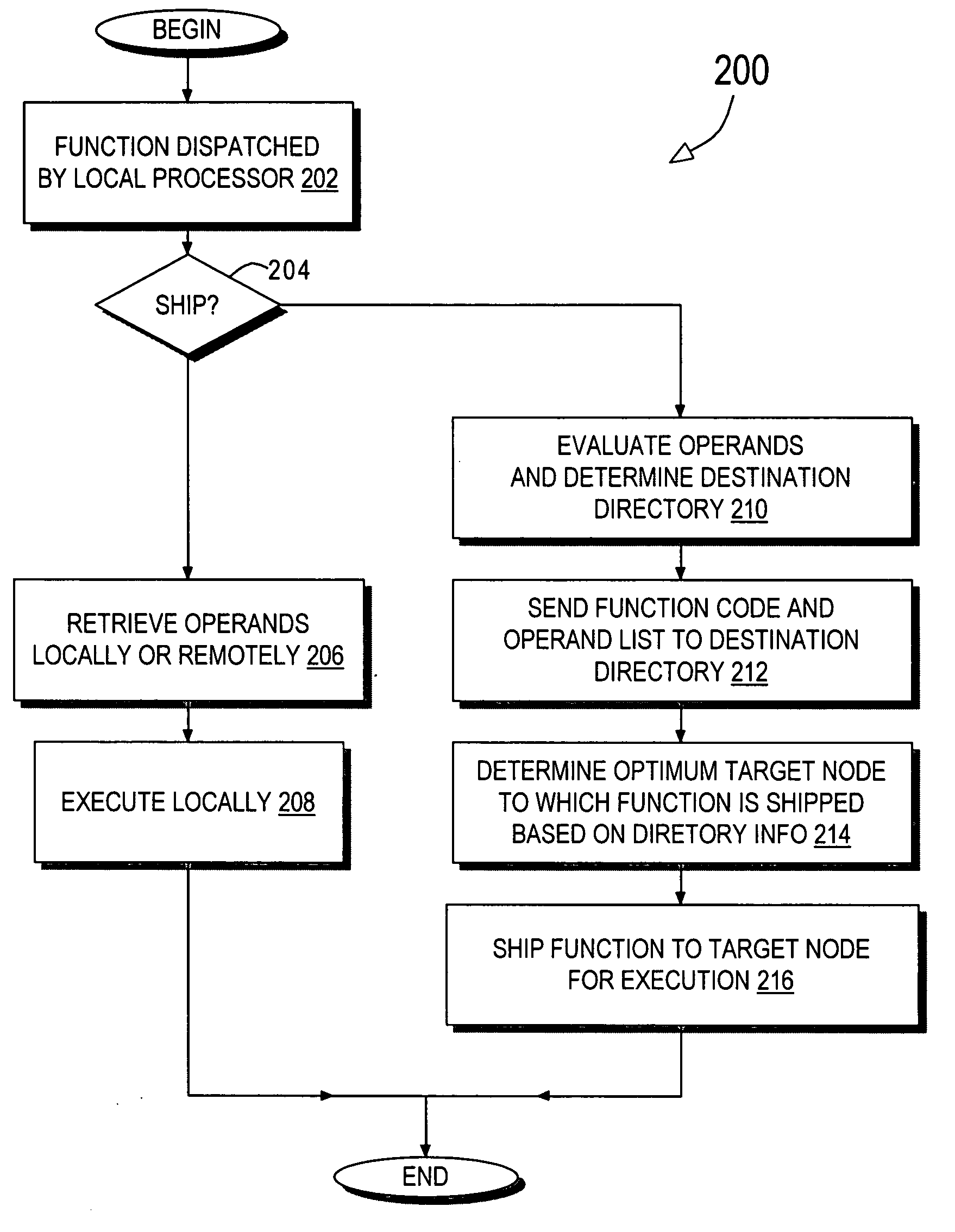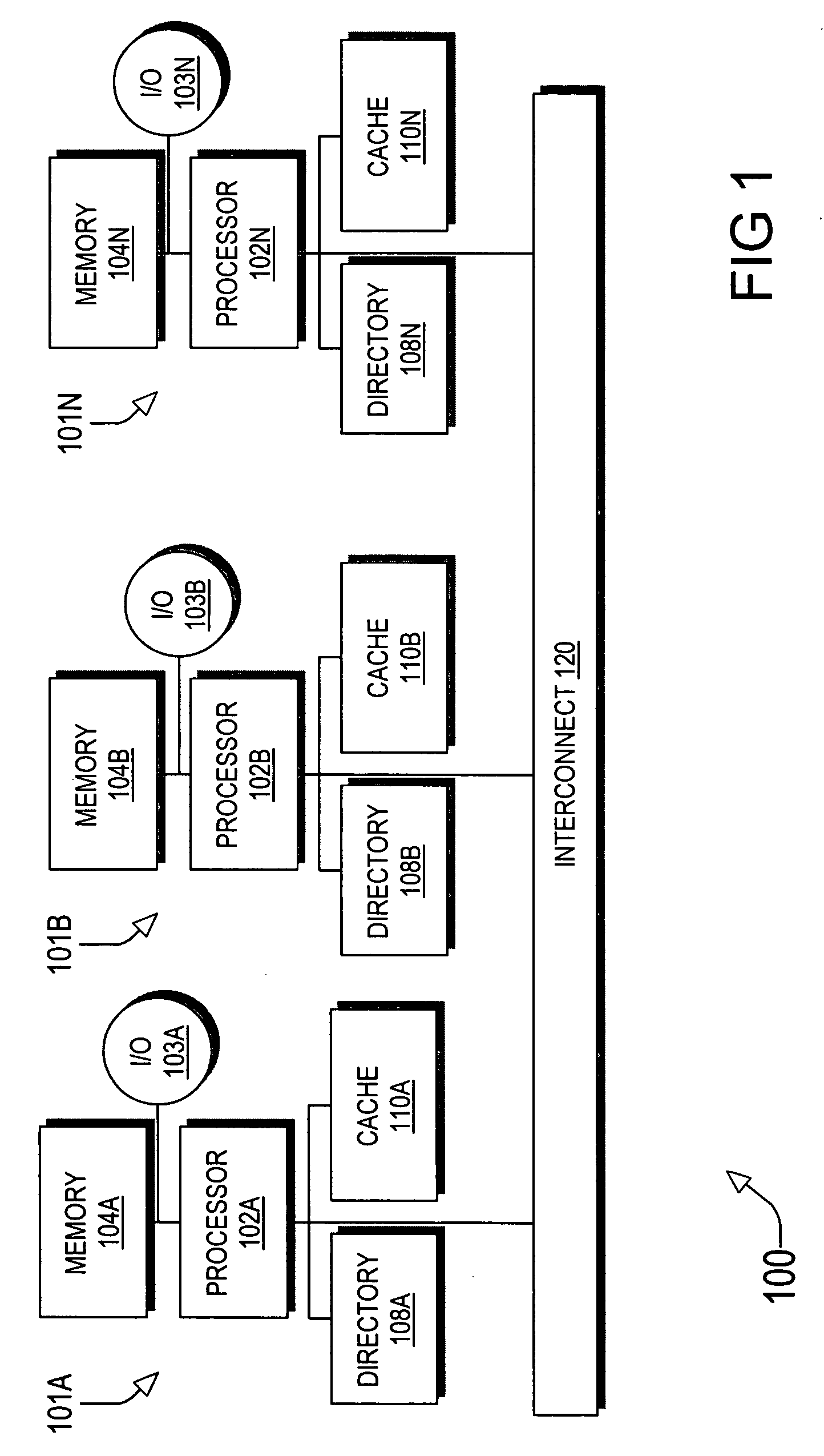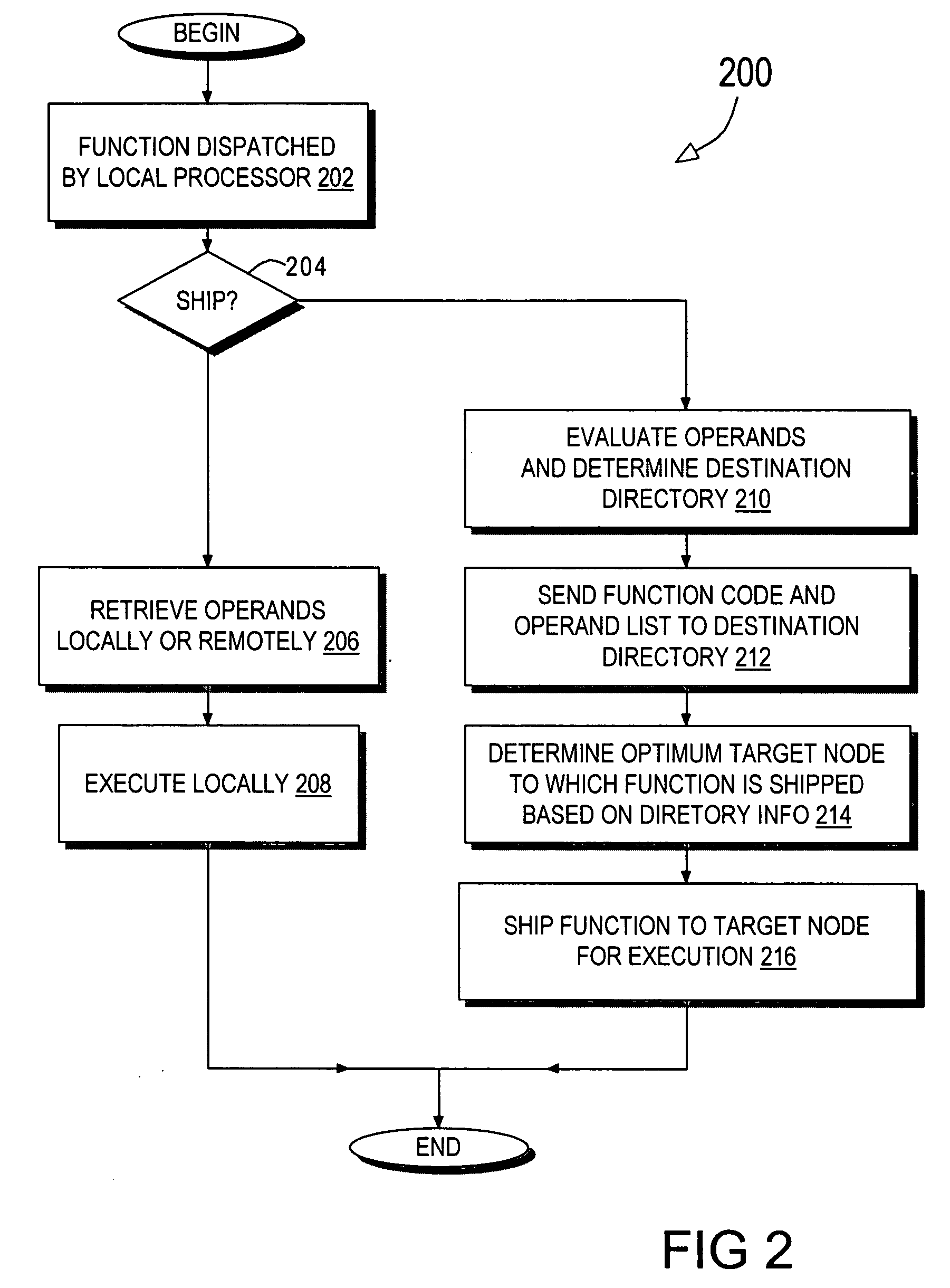Directory based support for function shipping in a multiprocessor system
a multiprocessor system and function shipping technology, applied in the field of multiprocessor systems, can solve the problems of high undesirable constraints on data storage, exceedingly difficult to predict a priori where data operands will be local, and access latency is a potentially performance limiting issue, so as to reduce memory access latency
- Summary
- Abstract
- Description
- Claims
- Application Information
AI Technical Summary
Benefits of technology
Problems solved by technology
Method used
Image
Examples
Embodiment Construction
[0014] Generally speaking, the invention facilitates efficient function shipping in a distributed memory, multiprocessor data processing system or network. When a function is to be shipped to another node, a message or data string indicating the function and the operand addresses is forwarded to the node (referred to herein as the destination node) having the cache directory (referred to herein as the destination directory) that contains coherency information for the greatest number of the function's operands. The destination directory then selects, based at least in part on which node(s) contain valid copies of the function's operands, a target node to execute the function. The ideal target node has a cache memory containing valid copies of all of the function's operands so that the function can be executed on the target node with low memory retrieval latency.
[0015] As implied by the foregoing description, the invention is implemented in a directory-based, multiprocessor system en...
PUM
 Login to View More
Login to View More Abstract
Description
Claims
Application Information
 Login to View More
Login to View More - R&D
- Intellectual Property
- Life Sciences
- Materials
- Tech Scout
- Unparalleled Data Quality
- Higher Quality Content
- 60% Fewer Hallucinations
Browse by: Latest US Patents, China's latest patents, Technical Efficacy Thesaurus, Application Domain, Technology Topic, Popular Technical Reports.
© 2025 PatSnap. All rights reserved.Legal|Privacy policy|Modern Slavery Act Transparency Statement|Sitemap|About US| Contact US: help@patsnap.com



